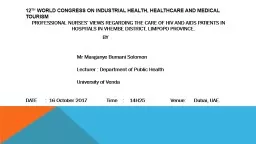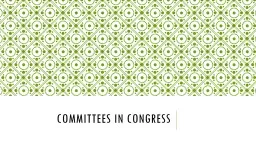PPT-12 th world congress on Industrial
Author : dudeja | Published Date : 2020-08-04
Health Healthcare and Medical Tourism PROFESSIONAL NURSES VIEWS REGARDING THE CARE OF HIV AND AIDS PATIENTS IN HOSPITALS IN VHEMBE DISTRICT LIMPOPO PROVINCE BY
Presentation Embed Code
Download Presentation
Download Presentation The PPT/PDF document "12 th world congress on Industrial" is the property of its rightful owner. Permission is granted to download and print the materials on this website for personal, non-commercial use only, and to display it on your personal computer provided you do not modify the materials and that you retain all copyright notices contained in the materials. By downloading content from our website, you accept the terms of this agreement.
12 th world congress on Industrial: Transcript
Download Rules Of Document
"12 th world congress on Industrial"The content belongs to its owner. You may download and print it for personal use, without modification, and keep all copyright notices. By downloading, you agree to these terms.
Related Documents














